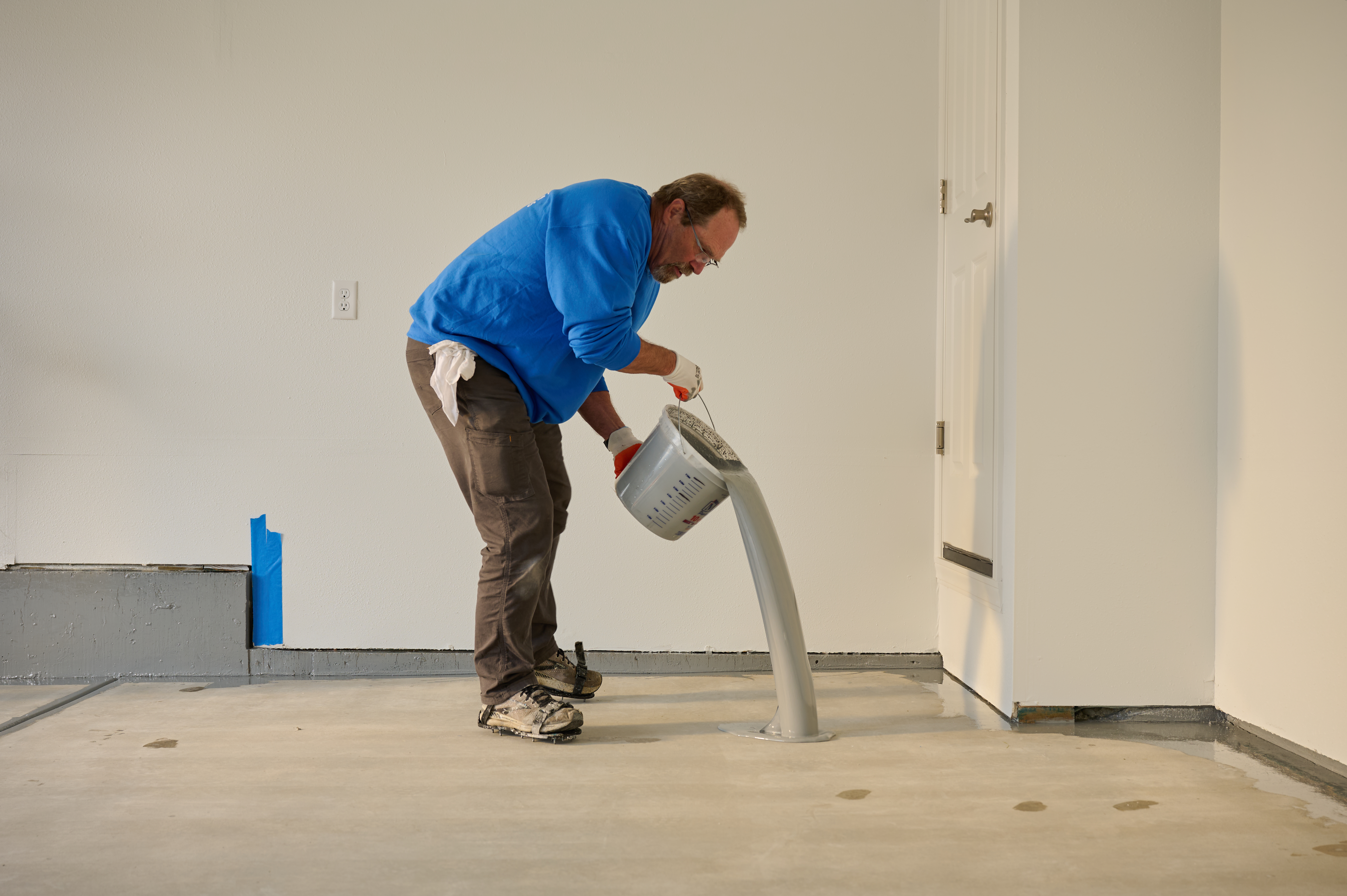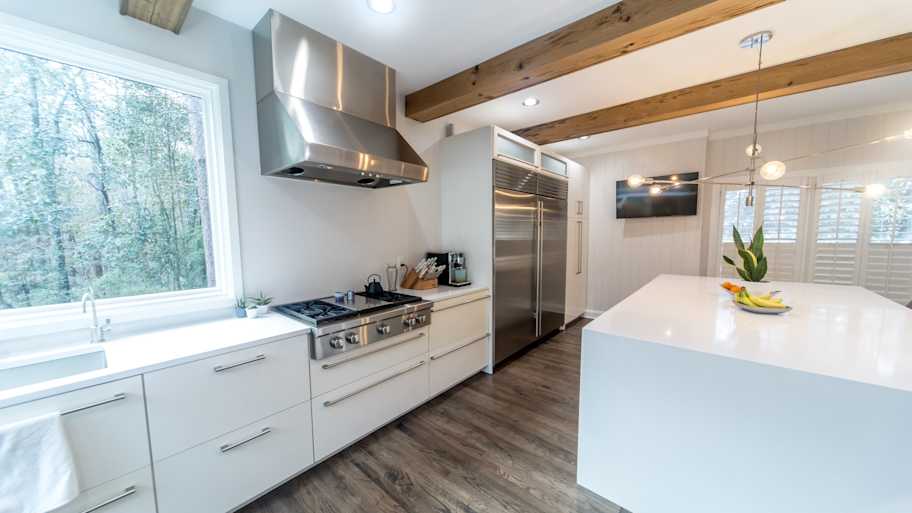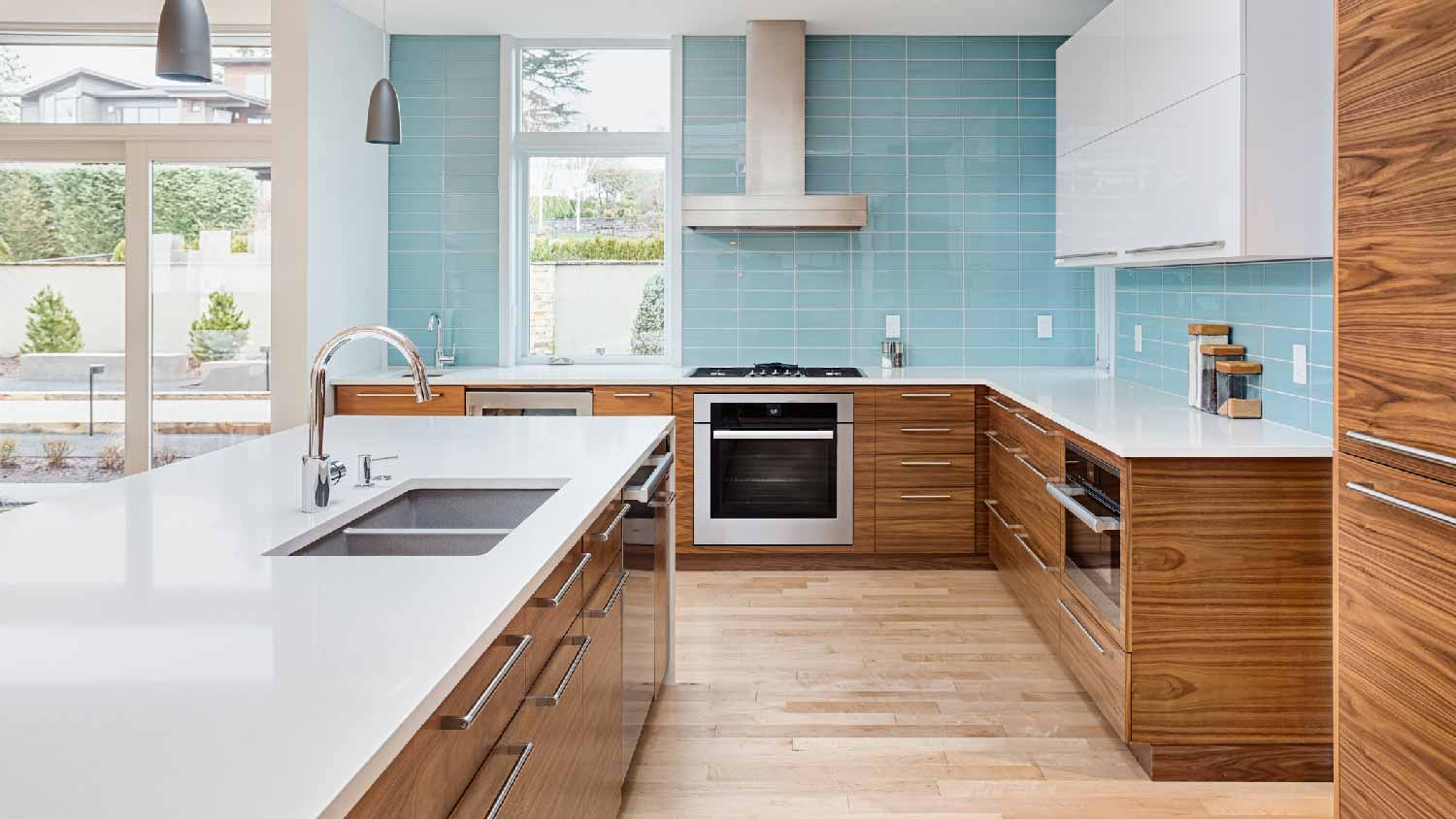
Staining concrete floors can add a little something to a drab slab. Learn more about how much stained concrete floors cost and what factors impact it.
Make your floors as good as new


You love your laminate flooring, but you could live without those scratch marks and scrapes. They’re likely from people tracking in small pebbles on their shoes, or maybe you rearranged furniture without felt protector pads (oops!). Fixing minor imperfections can be an easy DIY job, similar to how to repair hardwood floors, so put aside a half-hour this weekend to learn how to fix scratches on laminate flooring, and then take on the scratches with confidence.
The first thing you need to do when figuring out how to fix scratches on laminate flooring is to assess how bad the damage is. Is it a light, superficial scratch? Or is it deeper? For light scratches, you can use pencils, markers, or crayons. For deeper scratches, you’ll need putty or wax.
Once you’ve decided on the type of product you need, you have to figure out the color of your flooring. This is easy if you wrote down the manufacturer and model information. If not, you might have a sample piece to take to the store. Otherwise, you can take a photo of the flooring and do your best. In some cases, you won’t need to know the shade of your flooring. For example, universal kits come with products in a wide range of hues. And if you opt for a wax kit, you’ll need to mix colors to get the right match for your flooring.
Regularly cleaning your flooring can go a long way in not only making it shine but also making it last. Dirt and debris can scratch your floor and create more problems. Clean your floors with the products and equipment recommended by the manufacturer.

Clean the floor well with a broom, mop, or vacuum. Then, use a cloth to wipe down the affected area one more time to get rid of any trace of dirt or dust.

After the floor is clean and all traces of dust and dirt have been removed, it’s time to repair the scratches using one or more of the following methods. Depending on the depth and severity of the scratch, you may only need to touch it up with a marker or touch-up pencil. You may need floor putty, burn-in sticks, or wax for deeper scratches.
Luckily, fixing scratches on laminate flooring is easier and faster than the cost to refinish hardwood floors, which is an advantage of choosing laminate.
Touch-up pencils, markers, and crayons ($5–$10): These products work best for temporarily fixing light, superficial scratches and scuff marks. Color in the scratch with light strokes until the scratch is gone. Make sure you don’t overdo it because the affected area gets darker with every layer.
Burn-in sticks ($20–$25): Burn-in sticks are hard resins. Heat up the stick with an electric knife, and fill the scratch with the melted resin (be careful when handling the knife since it’s extremely hot). Remove any excess with a plastic card. Let it dry completely. Often, fixing the scratch with burn-in sticks is highly effective, and you won’t be able to tell there was any damage at all.
Floor putty ($5–$10): The putty is good for fixing deep scratches. Use a putty knife at a 45-degree angle and work it in from all sides until you fill the groove to the top. Then, use the edge of the knife and scrape it to remove any excess. Let the floor dry for a full day. This is a permanent repair.
Wax ($15–$40): Wax scratch removal products are sold in all-in-one kits. Heat the wax with the heating pen, and use the applicator to fill in the scratch. Wait 5 to 7 seconds for the wax to cool, and remove any excess with a planer.

Use a cloth to buff the scratch, and wipe it down with a soft cloth. If necessary, use fine-grit sandpaper to smooth the surface. If you sand the floor, wipe with a damp cloth and let it dry. Be careful though. Unlike hardwood floors that can be refinished multiple times, laminate flooring only has a thin image layer, so sanding too much can remove the wood look.

Open your windows for good ventilation before completing this step. If your kit comes with varnish, apply it with a brush. Then, sand the floor again.
If you have the time and basic DIY skills, you can fix most light scratches for $5 to $40. If you prefer to hand the job over to a pro, hire a local flooring repair pro who will charge around $100 to $300 to fix gouges. It’ll cost $300 or more to replace planks. Although this can be costly, it’s easier on the wallet than the cost of fixing laminate flooring that’s been damaged by water.
Mizuki Hisaka contributed to this piece.
From average costs to expert advice, get all the answers you need to get your job done.

Staining concrete floors can add a little something to a drab slab. Learn more about how much stained concrete floors cost and what factors impact it.

Pouring a new concrete floor can create new usable space for your home and raise its value. This guide breaks down what affects project costs.

Looking for a more eco-friendly flooring option? Learn how much Marmoleum® flooring costs and what factors can affect the price of installation.

Confused about what type of plywood is best for subflooring? This guide tells you all you need to know, based on the unique requirements and scope of your project.

Are you torn between tile-look and wood-look vinyl flooring? Let's break down LVT versus LVP to help you choose the right style for your space without overthinking it.

Updated flooring can make any room in your home feel brand new. Explore flooring installation costs in New York, NY, from materials to labor costs.